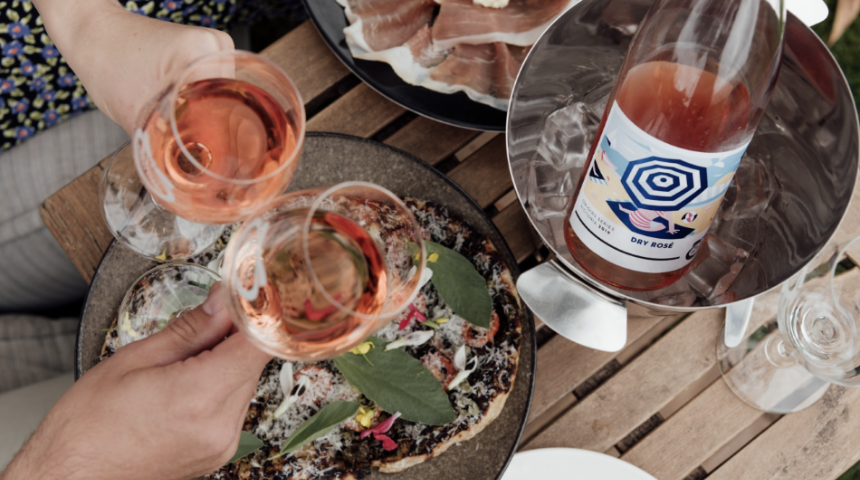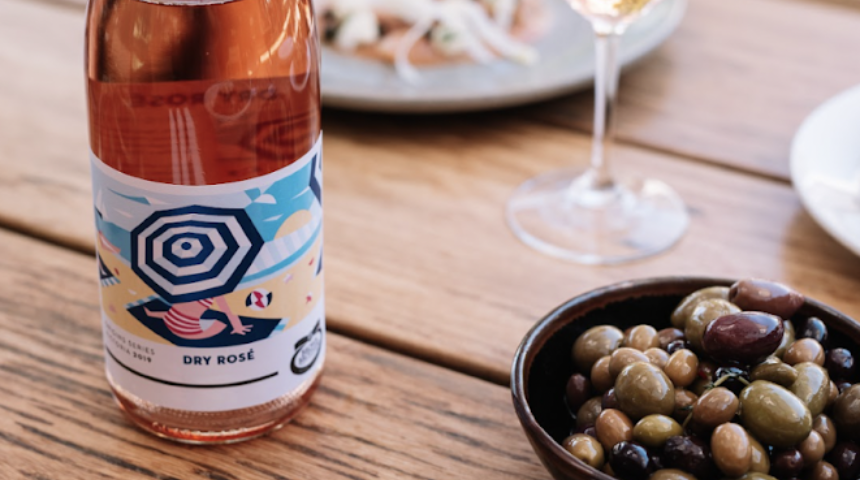
Picture this: it’s a gloomy night, rain is thundering against the window, and it’s cold – by Australian standards, at least. What sort of drink would you be craving?
Let me guess: a red wine or perhaps a whiskey? That certainly would be the usual. But according to the wine connoisseurs at Brown Brothers, we should be adding rosé to this list. We spoke to Andrew Harris, Brown Brothers ambassador and wine educator, and Bodee Price, Brown Brothers head chef, to discover their advice for drinking rosé during the cooler months.
Choosing the right rosé for winter
Most people think red wine is the right taste for winter, why should they choose rosé instead?
Andrew: I think there’s a shift in consumption habits in Australia, especially around red wines. We’re seeing more producers moving away from the blockbuster, powerful reds of the 1980s and 1990s. There’s been an explosion of interest in lighter reds like pinot noir and tempranillo.
Rosé has been beneficial for people looking for lighter options, not only in taste but also alcohol level. In general, most full-bodied reds in Australia sit between 13.5% and 15% alcohol by volume while most dry rosés sit between 12.5% and 13.5%. So, you get a super fresh and flavoursome wine with a little less alcohol.
What’s the right type of rosé for winter?
Andrew: I’m a real fan of the textural, dry rosé styles that have been hitting the market recently – made from varieties like nebbiolo, sangiovese, and grenache.
What’s the best winter-time rosé this year?
Andrew: My go-to is the Brown Brothers Origins Rosé. This wine is a blend of cabernet sauvignon and shiraz coming out of the King Valley, Heathcote, and Swan Hill districts. It’s made using the saignée (to bleed) technique to extract a light, salmon-pink colour. It’s then fermented at cool temperatures in stainless steel tanks to retain the red berry fruit lift. The wine is fresh with watermelon, strawberry, and spice aromas. On the palate it’s delicate while having a savoury, textural finish.
Do you have any tips for finding a rosé that suits your personal taste?
Andrew: Taste, taste, taste! Get visiting cellar doors (they will appreciate it post-Covid lockdowns) and try as many different wines as you can. My wine drinking journey probably took five years of trialling a lot of different wine styles and never getting stuck on one for too long. It was the same journey as finding my favourite rosé. I now find myself drinking all different styles of wine depending on the occasion and the food.
Pairing rosé with winter meals
What sort of winter meal is the best pairing for rosé?
Bodee: A more full-bodied rosé can pair well with some winter foods. A rich pork paella will pair with rosé and it can be nice and warming in the winter while not weighing you down like a rich, heavy braise. Also, a hearty vegetable soup pairs well with the bright acidity that many rosé have.
What sort of winter dessert is the best pairing for rosé?
Bodee: A slightly sweeter rosé like moscato rosé works well with lighter desserts, sweet pastries, and berries.
Do you have any tips for pairing rosé with food?
Bodee: The ultimate no-no’s when it comes to pairing food and rosé would be not to pair big, bold wines with light, raw seafoods and the same the other way – don’t pair light wines with a heavy, rich meat or dessert.
Head out to a restaurant and ask your sommelier or waiter if you can taste some different rosé wines to see what they will work with on the menu. They’re a great resource as they’ll be knowledgeable about both the food and the rosé they have on offer.

The Taste Test: Now it’s my turn!
On a fittingly cold and windy winter evening, I sought out a ‘textural dry rosé’, just as Andrew had suggested. I searched for a nebbiolo, sangiovese, or grenache, and found the Turkey Flat rosé, which is a grenache blend. It was the sort of night where we would usually indulge in a strong red wine – all the other ingredients for the evening were the same: cosy tv show, fluffy blanket, and chocolate. But this time, we tried some rosé.
The Turkey Flat rosé was a pale, peachy pink in colour, with a subtle, dry flavour. On the bottle, they recommend you drink the wine chilled – which may put off some winter-time drinkers – but I decided to ignore this advice and it worked out nicely. At room temperature, the wine was delicious. Unlike some sweeter rosés and white wines, this dry rosé didn’t get sickly or syrupy when warm, it remained light and easy to drink. Just as Andrew had said, it was a relief to drink a wine with a lower percentage of alcohol, as it made it a more casual experience and meant I didn’t have to limit myself to one glass on a weeknight (if the mood struck me).
I find that it does get quite tiresome drinking only heavy red wine in winter, and rosé is lighter while retaining the warmth of a red, making it the perfect replacement. Although a red wine sometimes matches the cold and feels quite cosy, at other times you just feel like something lighter – and now, I’ll go for rosé in those moments.
The Brown Brothers Origins Dry Rosé is available for purchase on the Brown Brothers website HERE or in selected bottle shops.
Note: Interview answers have been edited for length and clarity.
